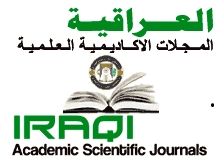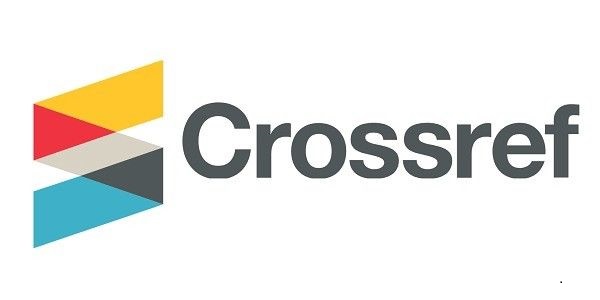Comparative assessment of extraction methods and quantitative HPLC estimation of Kaempferol in the leaves of Prosopis Juliflora Linn Growing in Iraq
DOI:
https://doi.org/10.56714/bjrs.50.2.21Keywords:
HPLC., , Extraction techniques, Prosopis Juliflora, KaempferolAbstract
Kaempferol is an active native flavonoid, has long been recognized for its curative effects. It has been observed to possess numerous pharmaceutical characteristics. High performance liquid chromatography (HPLC) was used as a quantitative evaluation method to determine the best extraction solvent for obtaining Kaempferol from Prosopis juliflora leaves. In this study, ethanol, ethyl acetate and methanol were used as solvents in the extraction of Kaempferol flavonoid from Prosopis juliflora by employing traditional methods of extraction (reflex and maceration). The plant leaves extract of Prosopis juliflora showed existence of Kaempferol compound. Among the three solvents used, it was obvious that ethyl acetate extract of leaves showed the most significant amount of Kaempferol (92.54 mg.L-1). In accordance to the HPLC results, reflex was the most efficient technique for extracting kaempferol from Prosopis juliflora, and ethyl ethanoate was the best solvent. This information may contribute to develop this flavonoid as a possible agent for the prevention and treatment of some diseases
Downloads
References
K. Ali, A. Ali, M.N. Khan, S. Rahman, S. Faizi, M. S. Ali, and S.G. Musharraf, '' Rapid identification of common secondary metabolites of medicinal herbs using high-performance liquid chromatography with evaporative light scattering detector in extracts,'' Metabolites, 11(8), 489 2021. DOI: 10.3390/metabo11080489.
A. Roy, A. Khan, I. Ahmad, S. Alghamdi, B.S. Rajab, A.O. Babalghith, M.Y. Alshahrani, and S. Islam, '' Flavonoids a bioactive compound from medicinal plants and its therapeutic applications, '' BioMed Research International, 2022(1), 5445291, 2022. DOI: 10.1155/2022/5445291.
H. Hasnat, S.A. Shompa, M. M. Islam, S. Alam, F.T. Richi, N.U. Emon, and F. Ahmed, ''Flavonoids: A treasure house of prospective pharmacological potentials,'' Heliyon, 2024.DOI: https://doi.org/10.1016/j.heliyon.2024.e27533.
B. Xia , Y. Li, Y. Liu, W. Sun, J. Chen, L. Li, and H. Cheng, '' Rapid Separation of Asiatic Acid, Quercetin, and Kaempferol from Traditional Chinese Medicine Centella asiatica (L.) Urban Using HSCCC‐Semi‐Prep‐HPLC and the Assessment of Their Potential as Fatty Acid Synthase Inhibitor,'' International Journal of Analytical Chemistry, 2023(1), 7769368 2023.DOI: https://doi.org/10.1155/2023/7769368.
J.O. Chaves, M.C. De Souza, L.C. Da Silva, D. Lachos-Perez, P.C. Torres-Mayanga, A.P.D.F. Machado, and M.A. Rostagno, '' Extraction of flavonoids from natural sources using modern techniques,'' Frontiers in chemistry, 8, 507887, 2020. DOI: https://doi.org/10.3389/fchem.2020.507887.
I. Tariq, A. Yasmin, A. Imran, H. Akhtar, M. Afzaal, M. Azeem, and A.B. Kinki, ''A review on extraction technique and immune-boosting properties of Moringa oleifera Lam,'' International Journal of Food Properties, 26(1), 2493-2508 , 2023. DOI: https://doi.org/10.1080/10942912.2023.2249263.
S. Asaf, A.L. Khan, A. Khan and A. Al-Harrasi, '' Unraveling the chloroplast genomes of two prosopis species to identify its genomic information, comparative analyses and phylogenetic relationship,'' International Journal of Molecular Sciences, 21(9), 3280, 2020. DOI: 10.3390/ijms21093280.
I. Saleh and M.H. Abu-Dieyeh, '' Novel Prosopis juliflora leaf ethanolic extract as natural antimicrobial agent against food spoiling microorganisms,'' Scientific reports, 11(1), 7871,2021. DOI: https://doi.org/10.1038/s41598-021-86509-3.
S. Henciya, P. Seturaman, A.R. James, Y.H. Tsai, R. Nikam, Y.C. Wu and F.R. Chang, '' Biopharmaceutical potentials of prosopis spp.(mimosaceae, leguminosa),'' Journal of food and drug analysis, 25(1), 187-196, 2017. DOI: 10.1016/j.jfda.2016.11.001.
A. Periferakis, K. Periferakis, I.A. Badarau, E.M. Petran ; D.C. Popa, A. Caruntu, and D.O. Costache ,'' Kaempferol: antimicrobial properties, sources, clinical, and traditional applications,'' International journal of molecular sciences, 23(23), 15054, 2022. DOI: 10.3390/ijms232315054.
L. Abidin, M. Mujeeb, S.R. Mir, S.A. Khan, and A., Ahmad '' Comparative assessment of extraction methods and quantitative estimation of luteolin in the leaves of Vitex negundo Linn. by HPLC '', Asian Pacific Journal of Tropical Medicine, 7, S289-S293, (2014). DOI: https://doi.org/10.1016/S1995-7645(14)60248-0.
M. Nabi, M.I. Zargar, N. Tabassum, B.A. Ganai, S.U.D. Wani, S. Alshehri, and F. Shakeel, '' Phytochemical profiling and antibacterial activity of methanol leaf extract of Skimmia anquetilia,'' Plants, 11(13), 1667, 2022.DOI: https://doi.org/10.3390/plants11131667.
L.Y. Tu, J. Pi, H. Jin, J.Y. Cai, and S.P. Deng, '' Synthesis, characterization and anticancer activity of kaempferol-zinc (II) complex,'' Bioorganic & Medicinal Chemistry Letters, 26(11), 2730-2734, 2016. DOI: 10.1016/j.bmcl.2016.03.091.
E.A. Hayouni, M. Abedrabba, M. Bouix, and M. Hamdi, ''The effects of solvents and extraction method on the phenolic contents and biological activities in vitro of Tunisian Quercus coccifera L. and Juniperus phoenicea L. fruit extracts,'' Food chemistry, 105(3), 1126-1134, 2007.DOI: https://doi.org/10.1016/j.foodchem.2007.02.010.
T. Kowalska, and M. Sajewicz, '' Thin-layer chromatography (TLC) in the screening of botanicals–its versatile potential and selected applications,'' Molecules, 27(19), 6607, 2022.DOI: https://doi.org/10.3390/molecules27196607.
M. Sonam, R.P. Singh, and S. Pooja, '' Phytochemical screening and TLC profiling of various extracts of Reinwardtia indica,'' International Journal of Pharmacognosy and Phytochemical Research, 9(4), 523-527, 2017. DOI:10.25258/phyto.v9i2.8125.
H.H. Heal, Z.T. Al-Dallee, and E.J. Khadim,'' Extraction, Isolation and Identification of Luteolin Flavonoid from Vitex pseudonegundo leaves,'' In IOP Conference Series: Earth and Environmental Science (Vol. 1262, No. 5, p. 052016). IOP Publishing, Dec 2023. DOI:10.1088/1755-1315/1262/5/052016.
S.N. Kharat, N. Ansari, and D.V. Mendhulkar,'' HPTLC screening for Flavonoids content in leaf extracts of Syzygium cumini (Linn.) and its Antimicrobial activity,'' Research Journal of Pharmacy and Technology, 13(6), 2720-2726, 2020. DOI:10.5958/0974-360X.2020.00484.9.
S. Zeghoud, A. Rebiai, H. Hemmami, B. Ben Seghir, N. Elboughdiri, S. Ghareba, and N. Abbas, '' ATR–FTIR spectroscopy, HPLC chromatography, and multivariate analysis for controlling bee pollen quality in some Algerian regions,'' ACS omega, 6(7), 4878-4887, 2021.DOI: https://doi.org/10.1021/acsomega.0c05816.
M. Krysa, M. Szymańska-Chargot, and A. Zdunek,'' FT-IR and FT-Raman fingerprints of flavonoids–a review,'' Food chemistry, 393, 133430, 2022. DOI: https://doi.org/10.1016/j.foodchem.2022.133430.

Downloads
Published
Issue
Section
License
Copyright (c) 2024 Basrah Researches Sciences

This work is licensed under a Creative Commons Attribution 4.0 International License.







